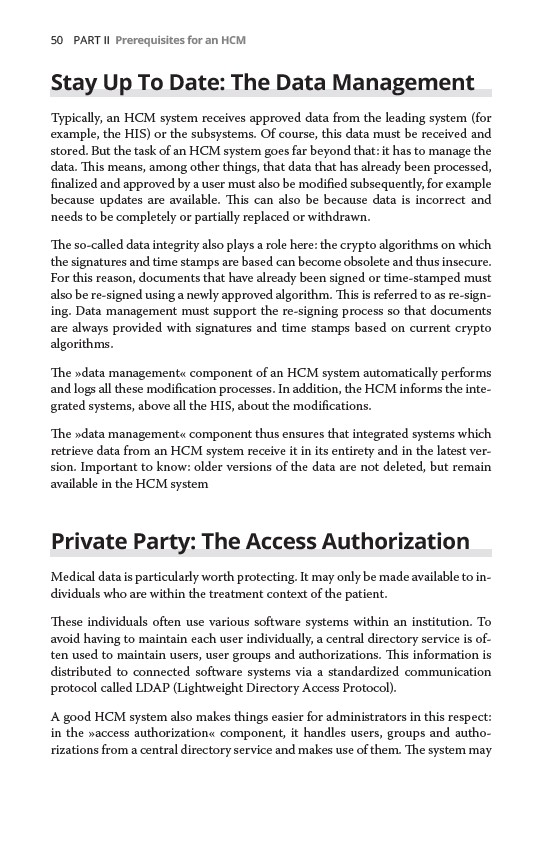
50 PART II Prerequisites for an HCM
Stay Up To Date: The Data Management
Typically, an HCM system receives approved data from the leading system (for
example, the HIS) or the subsystems. Of course, this data must be received and
stored. But the task of an HCM system goes far beyond that: it has to manage the
data. This means, among other things, that data that has already been processed,
finalized and approved by a user must also be modified subsequently, for example
because updates are available. This can also be because data is incorrect and
needs to be completely or partially replaced or withdrawn.
The so-called data integrity also plays a role here: the crypto algorithms on which
the signatures and time stamps are based can become obsolete and thus insecure.
For this reason, documents that have already been signed or time-stamped must
also be re-signed using a newly approved algorithm. This is referred to as re-signing.
Data management must support the re-signing process so that documents
are always provided with signatures and time stamps based on current crypto
algorithms.
The »data management« component of an HCM system automatically performs
and logs all these modification processes. In addition, the HCM informs the integrated
systems, above all the HIS, about the modifications.
The »data management« component thus ensures that integrated systems which
retrieve data from an HCM system receive it in its entirety and in the latest version.
Important to know: older versions of the data are not deleted, but remain
available in the HCM system
Private Party: The Access Authorization
Medical data is particularly worth protecting. It may only be made available to individuals
who are within the treatment context of the patient.
These individuals often use various software systems within an institution. To
avoid having to maintain each user individually, a central directory service is often
used to maintain users, user groups and authorizations. This information is
distributed to connected software systems via a standardized communication
protocol called LDAP (Lightweight Directory Access Protocol).
A good HCM system also makes things easier for administrators in this respect:
in the »access authorization« component, it handles users, groups and authorizations
from a central directory service and makes use of them. The system may